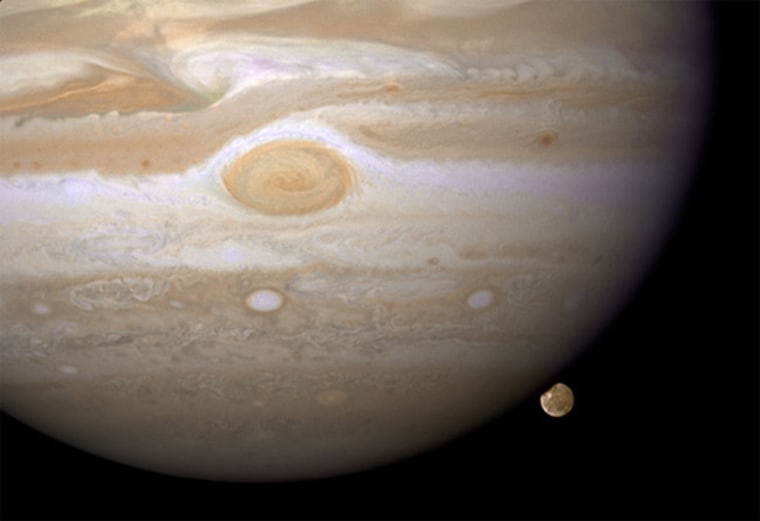NASA's Hubble Space Telescope has caught Jupiter's moon Ganymede playing a game of "peekaboo." The new image, released today, shows Ganymede just before the seemingly tiny orb ducks behind its giant host.
Ganymede orbits Jupiter every seven days. And since the moon's orbit is tilted nearly edge-on to Earth, astronomers often spot Ganymede passing in front of and disappearing behind Jupiter, only to reemerge later.
Ganymede is the largest of Jupiter's four moons called the Galilean moons for their discoverer. In fact, this ball of rock and ice is the largest moon in our solar system, with a diameter of about 3,270 miles (5,262 km).
Even so, the mega moon appears as a small marble next to Jupiter, the largest planet in the solar system. Jupiter is so big that only part of its southern hemisphere can be seen in the Hubble image.
Unlike the gas giant planet, Ganymede has a hard shell. The image shows features on Ganymede's surface, including the white impact crater called Tros and its system of rays, bright streaks of material blasted from the crater. Tros and its ray system are roughly the width of Arizona.
The image also shows Jupiter's Great Red Spot (a large eye-shaped feature at the image's upper left). A storm the size of two Earths, the Great Red Spot has been raging for more than 300 years.
In addition to wowing viewers, images like this provide astronomers with information about Jupiter's upper atmosphere. That's because as Ganymede passes behind the giant planet, it reflects sunlight, which then passes through Jupiter's atmosphere. Imprinted on that light is information about the gas giant's atmosphere, which yields clues about the properties of Jupiter's high-altitude haze above the cloud tops.
The new photo is based on imagery recorded by Hubble on April 9, 2007. Hubble takes so many photographs of the cosmos that officials often process and release some of them long after the photos are actually captured.
Hubble images arrive as ones and zeros representing grayscale, digital photos taken with filters to block all but one color of light. The colors are added later with the popular Photoshop program.
